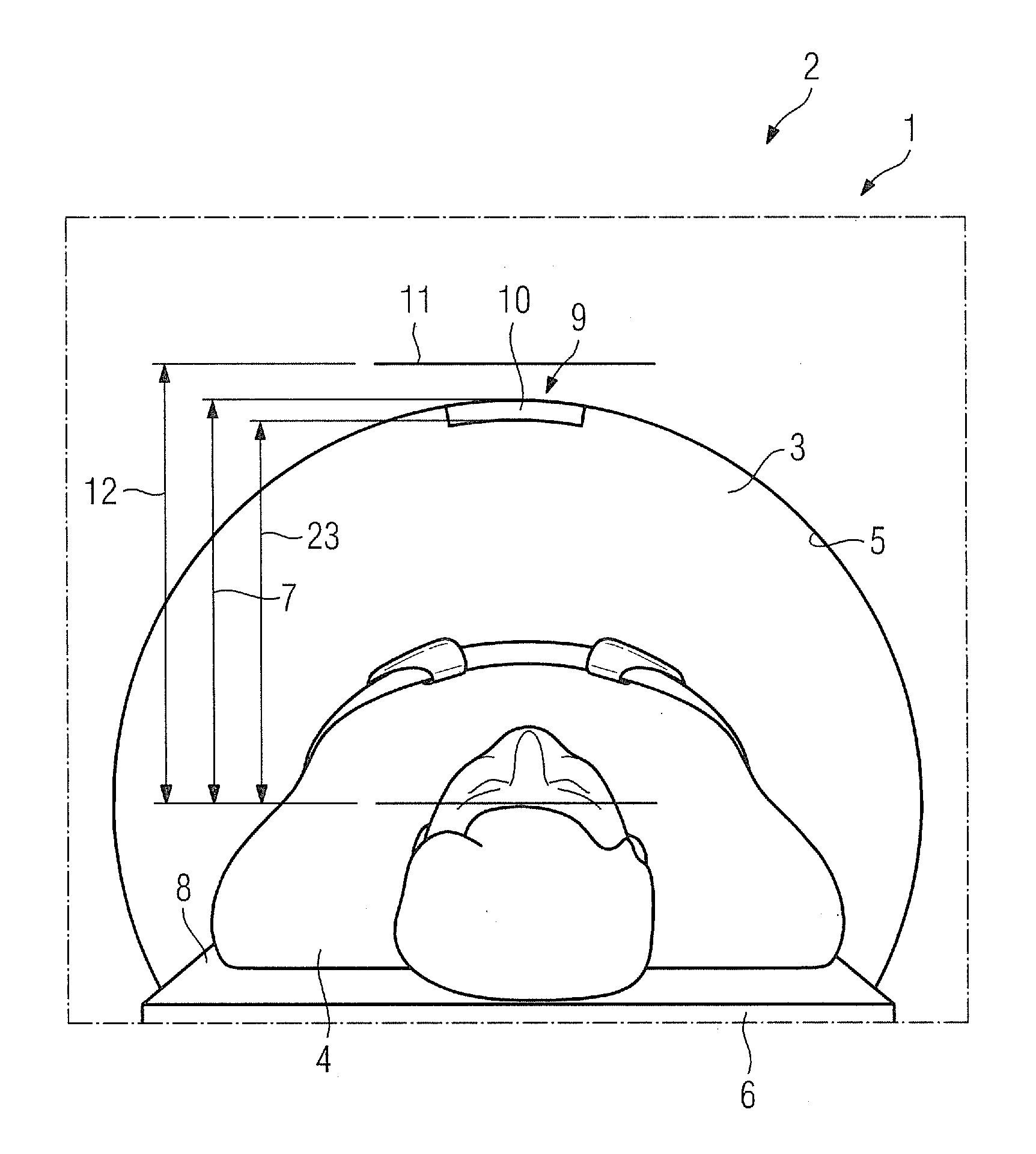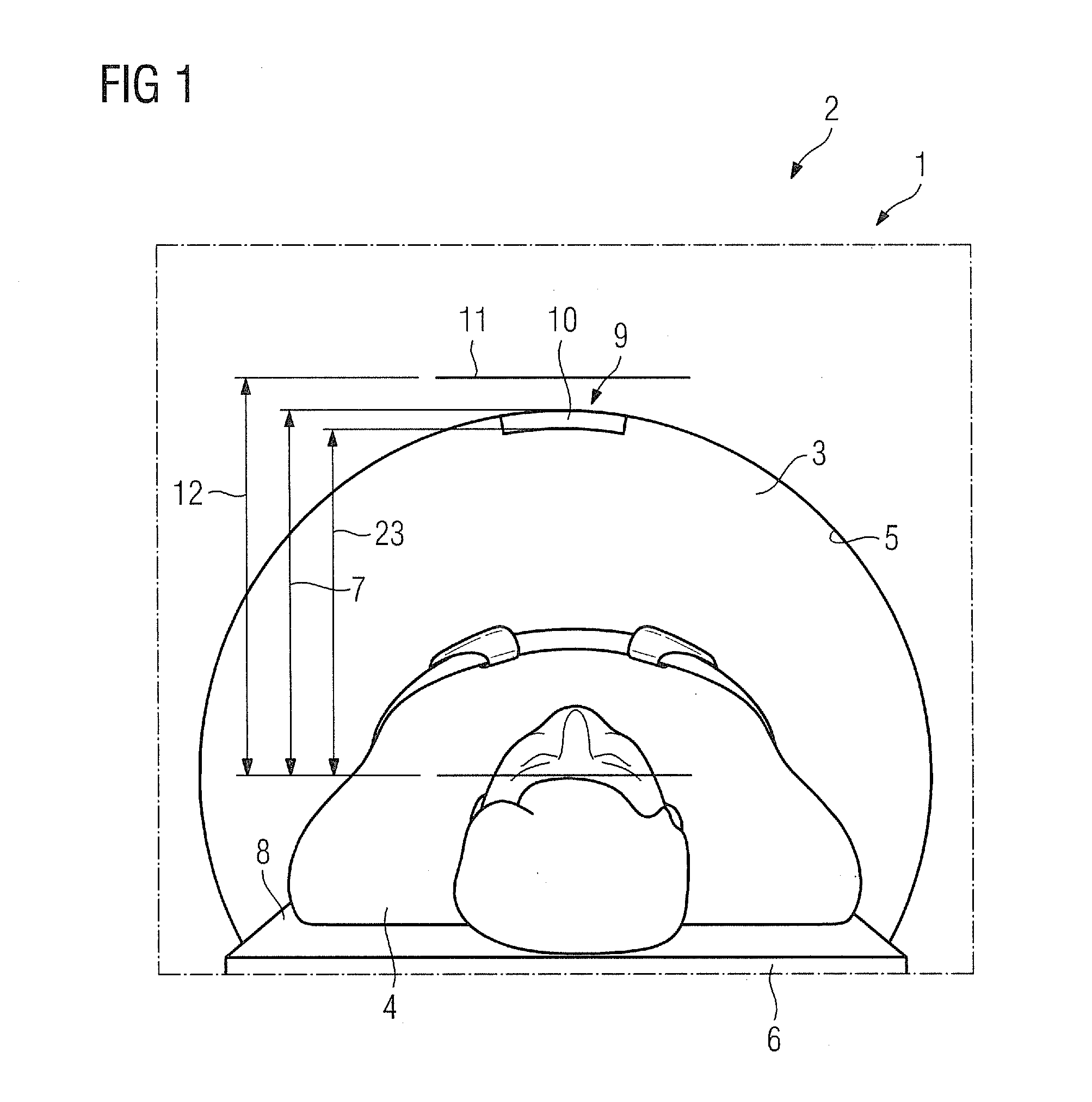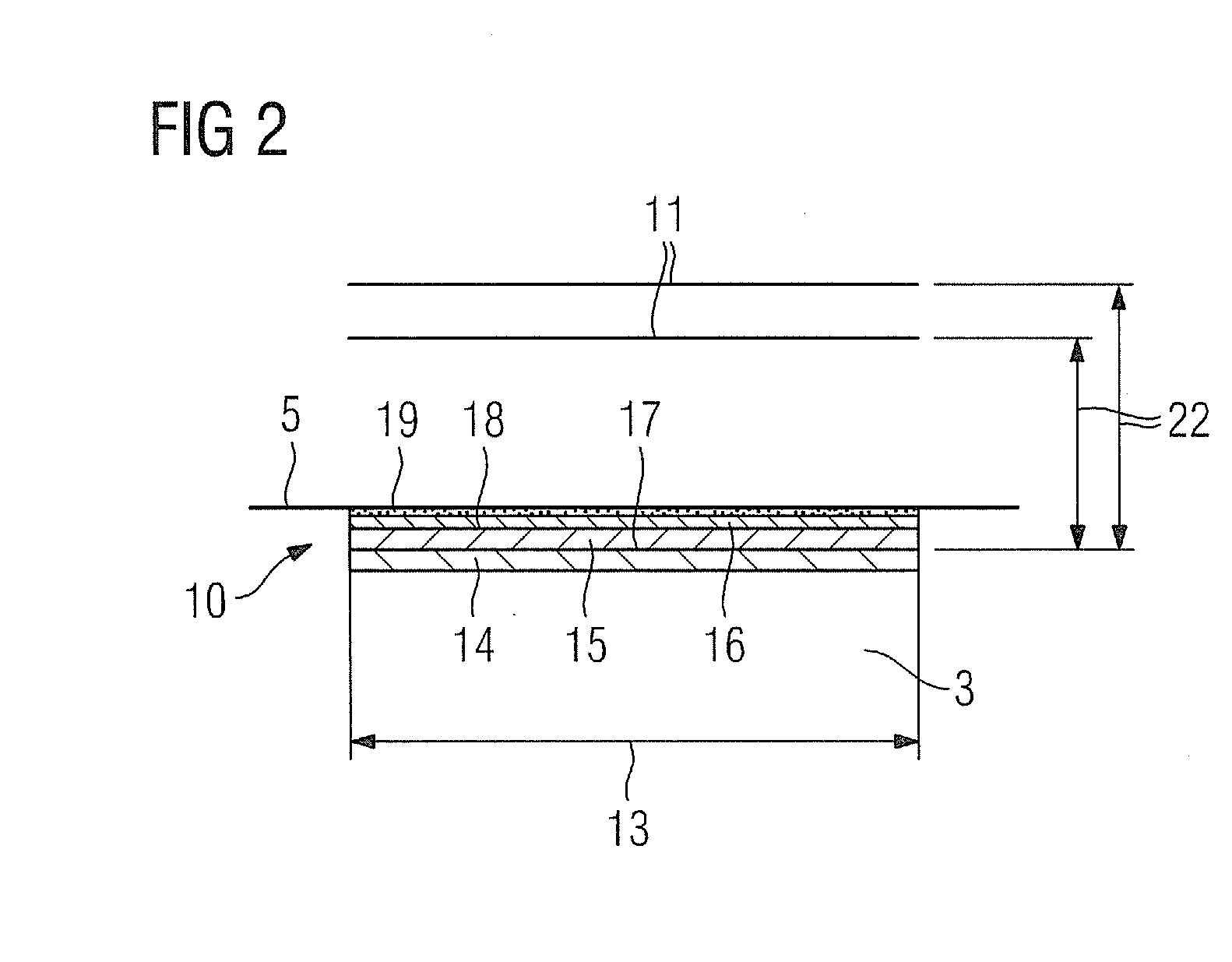Medical Imaging Device
- Summary
- Abstract
- Description
- Claims
- Application Information
AI Technical Summary
Benefits of technology
Problems solved by technology
Method used
Image
Examples
Embodiment Construction
[0016]FIG. 1 shows a schematic diagram of an inventive medical imaging device 1, in the present exemplary embodiment formed by a magnetic resonance device 2. The magnetic resonance device 2 comprises a receiving region 3 to receive a patient 4. The receiving region 3 is tubular, in particular circular cylinder-shaped, and enclosed by a wall 5 of the magnetic resonance device 2. The wall 5 of the magnetic resonance device 2 here is formed by a housing shell of the magnetic resonance device 2. In an alternative embodiment of the invention the medical imaging device 1 can also be formed by a computed tomography device and / or further medical imaging device, which appear useful to the person skilled in the art, having an in particular tubular receiving region 3 to receive the patient 4. A tubular receiving region 3 can also have a D-shaped cross section. The receiving region 3 can also be configured as C-shaped.
[0017]For an imaging magnetic resonance examination the patient 4 is position...
PUM
 Login to View More
Login to View More Abstract
Description
Claims
Application Information
 Login to View More
Login to View More - R&D Engineer
- R&D Manager
- IP Professional
- Industry Leading Data Capabilities
- Powerful AI technology
- Patent DNA Extraction
Browse by: Latest US Patents, China's latest patents, Technical Efficacy Thesaurus, Application Domain, Technology Topic, Popular Technical Reports.
© 2024 PatSnap. All rights reserved.Legal|Privacy policy|Modern Slavery Act Transparency Statement|Sitemap|About US| Contact US: help@patsnap.com










